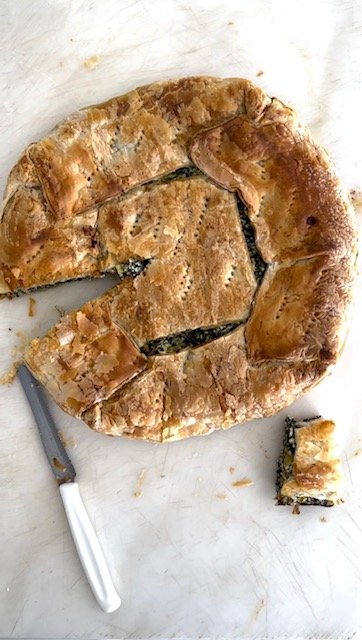Italian Weddings: Customs, Culture, and Celebration
Summer in Italy is not only synonymous with long beach days, peaches soaked in wine, seaside lunches, or a weekend mountain retreat to catch a cool breeze amidst the heat wave. Summer also symbolizes the kick-start of wedding season in Italy—so let the festivities for the couples-to-be commence!
Before getting into what exactly goes down in an Italian wedding, along with the typical customs and traditions, why do Italians decide to slot the celebration during summer? It could be the abundance of long, sunny days, venues along the Mediterranean coast, or settings nestled amongst the vines of a Tuscan vineyard. Italian life seems to slow down a bit during June, July, and especially August, allowing the bride and groom—and their loved ones—to enjoy the time off and celebrate with a long-weekend holiday.
There’s also the symbolic reason: summer is associated with life, harvest, and abundance—all symbolic of a fruitful marriage.
Whatever the real reason may be, if you’re attending a wedding in Italy during the summer… beware! The days can be long and hot!
Types of Weddings in Italy
In Italy, there are technically two types of weddings that can take place. There is a civil wedding, which is in the town hall and is led by a government official. Then there is a religious wedding—most commonly a Roman Catholic ceremony, since Italy is culturally Catholic. These weddings take place in a church, are officiated by a priest, and are legally binding (they are both civil and religious), though not without some official paperwork, of course.
Wedding Weekend
The serenade: First, there’s the tradition of La Serenata—a special custom that gained popularity in central and southern Italy after World War II. This gesture, typically carried out the night before the wedding, is a public declaration of the groom’s love and commitment to his soon-to-be wife. Through music and flowers, he expresses his devotion, offering a symbolic “yes” ahead of the official vows.
While some might now see La Serenata as old-fashioned, the tradition still endures—adapting with the times—and is often seen as an informal way to kick-start the wedding festivities. Guests gather the evening before the wedding outside the bride’s window (typically her home, but it depends where the venue is), and the groom sings to her and climbs to her window with flowers.
The day of the wedding: In Italy, Friday weddings are a no-no, as they’re considered bad luck. Sunday, on the other hand, is seen as the luckiest day for a couple to marry, symbolizing joy and prosperity. Saturday is also considered lucky—but not the luckiest! Most Italians get married on Sunday, though Saturday is perfectly acceptable too.
The bride is in white: An Italian bride always wears a white dress—the color symbolizing purity and new beginnings. Along with white, most brides accompany their look with intricate veils, often made of lace or embroidery, or even with a family heirloom attached. Guests know better than to wear white—it’s a color strictly reserved for the bride.
The bride’s bouquet: There’s a beautiful (and rather lengthy) ritual around the bride’s bouquet that is not as simple as ordering personal flower favorites. The parents of the bride are the ones who initially present the bouquet to their daughter before she leaves the house to get married. The bride then gifts her bouquet to her soon-to-be mother-in-law, symbolizing her gratitude. Finally, the groom gives her a fresh bouquet to accompany her to the altar—the last gift she receives as an engaged woman.
The ceremony: The wedding ceremony is typically an hour long, usually held in a Catholic church and officiated by a priest. It includes the bride walking down the aisle (usually with her father), mass, prayers, and the exchange of rings. In Italy, the bride and groom don’t typically prepare sappy or personalized vows to recite in front of the church. As for the rings, most Italians opt for very simple, matching gold bands that symbolize modesty.
Rice throwing: After the ceremony ends, guests make their way outside the church doors with fists full of rice—another item symbolizing fertility and prosperity—ready to greet the newlyweds. As the couple exits the church, rice is launched at them, showering them in love.
The extravagant dinner party: In true Italian style, the dinner party after the wedding ceremony is not for the faint of heart. Come VERY hungry, as food absolutely takes the spotlight—sometimes even outshining the bride. There are cocktails and antipasti served while awaiting the couple’s arrival, followed by a menu that often includes at least seven courses, all accompanied by wine and finished with dessert. This is the norm.
Confetti: I confetti in Italy—sugar-coated almonds wrapped in tulle or ribbon with a sweet message—are a staple at nearly every life milestone celebration. There is no wedding without them! These little bundles serve as a thank-you to guests for coming and are often beautifully displayed on a “confetti table,” featuring different varieties and colors.
Monetary gits: In Italy, it is absolutely the norm to give money as a wedding gift. The money is placed in envelopes, often accompanied by a sweet letter from the guest. At the dinner reception, there’s usually a basket where guests can drop their envelopes—and sometimes, the bride is even adorned with a small pouch or slip bag to collect them.
Have you ever been to a wedding in Italy or an Italian wedding? What were some things that surprised you or caught you by surprise?
Author Gabriela Proietti
Confetti




























